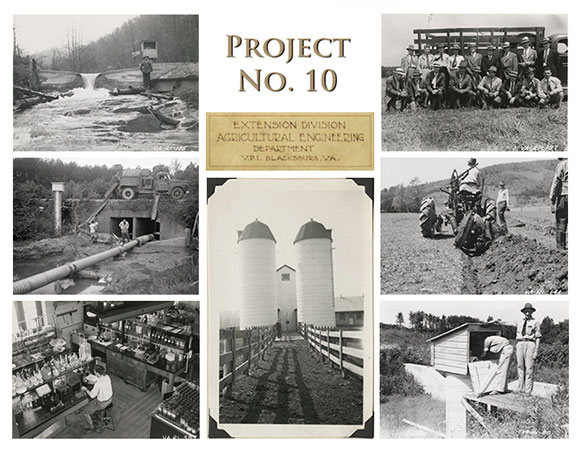SHORT

When W. Cully Hession (agricultural engineering '84), professor in the Department of Biological Systems Engineering, discovered thousands of documents and photographs, some dating back to 1915, deep within Seitz Hall, he knew he had found a collection that would enhance Virginia Tech's already rich history.
"I started fishing around in the darkroom and in the old storage rooms, and I found boxes and boxes of old photos and annual reports," said Hession. "Some of these photos have made it through two world wars."
Hession then talked to Gary Worley, director of the imaging and repository initiatives in digital imaging and archiving in Torgeson Hall. Worley assembled a team to scan all of the documents—and so began "Project No. 10," which is available to the public online on the Discovery Commons, the research repository at Virginia Tech, under the "Department of Agricultural Engineering" link.
The agricultural department, now known as the Department of Biological Systems Engineering, was established in 1920, according to its website. It began by offering teaching, research, and extension programs in soil and water. This extension program, as part of the Virginia Cooperative Extension, founded in 1914, reached out to local farmers and citizens to share research within the community. The department conducted research and then shared the results with farmers in the area. The department was then funded by an organization called Project No. 10—the namesake of the current archiving project.
The collection of documents includes descriptions of engineers helping farmers with irrigation, guides for using dynamite to clear forest areas, photos of research sites near campus, and more. "Ten Years of Agricultural Service," by the Agricultural Engineering Department of the Virginia Polytechnic Institute describes how the department distributed surplus war explosive during 1925-26 and 1927 to farmers at a cost to clear stumps and make room for more land. One hundred and thirty-three explosive demonstrations were held throughout the state to instruct on the proper handling of the explosives. This Extension tradition continues today, as faculty and staff from the biological systems engineering department help farmers with irrigation, wells, stream restoration, and more. "The department has about 20 faculty and staff members," said Hession, "with maybe eight or nine doing mostly Extension work."
The archiving project is a huge undertaking because of the sheer number of photographs and documents, some of them unorganized. Despite the scope of the project, Hession and his team continue working so that the historical documents can serve future research. Some, for instance, contain 30 years of sediment and rainfall data, and Hession's research focuses on watersheds. "They're departmental history, they're Virginia history, and once they're all scanned in and archived, I can use them for research," Hession said. "I'm just trying to save this data and make it public again."